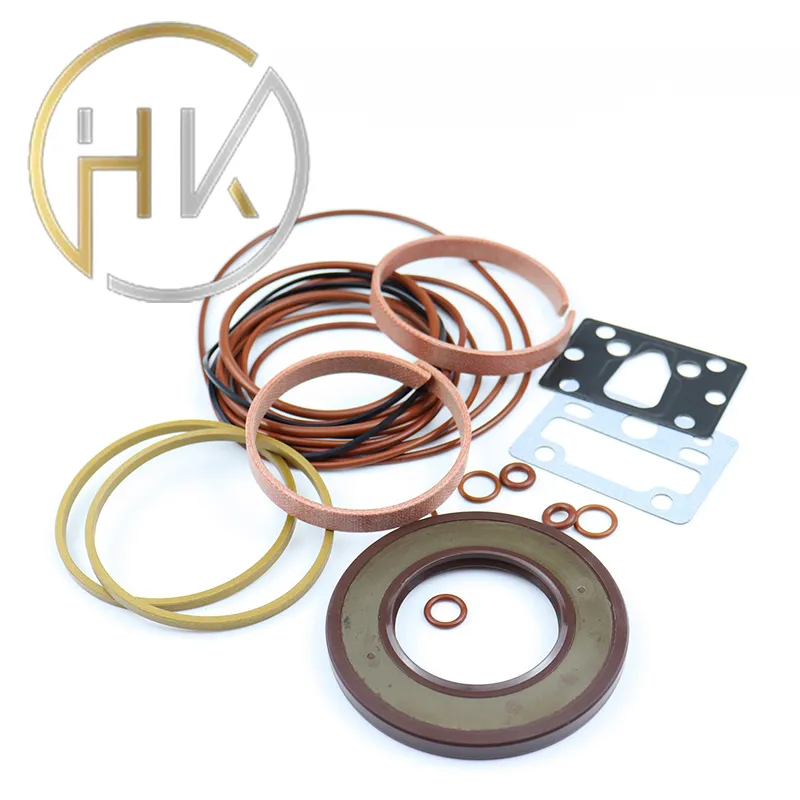ທ.ວ. . 31, 2024 06:57 Back to list
hydraulic oil seal material
Understanding Hydraulic Oil Seal Materials Types, Properties, and Applications
Hydraulic systems are integral components in various industrial applications, from construction machinery to aerospace systems. These systems rely on hydraulic oil seals to maintain operational integrity and efficiency. Hydraulic oil seals are crucial in preventing fluid leakage and protecting against contamination, thus ensuring optimal functionality. This article delves into the types of materials used for hydraulic oil seals, their unique properties, and their applications in various industries.
Types of Materials for Hydraulic Oil Seals
Hydraulic oil seals are made from a variety of materials, each selected based on specific operational conditions. The most common materials include
1. Nitrile Rubber (NBR) Nitrile rubber is one of the most widely used materials for hydraulic seals. It exhibits good resistance to petroleum-based oils, fuels, and water, making it suitable for typical hydraulic applications. NBR is also noted for its excellent tensile strength and elasticity, ensuring effective sealing under high-pressure conditions.
2. Fluoroelastomer (FKM) Fluoroelastomers are premium materials known for their exceptional chemical resistance, particularly against aggressive hydraulic fluids and high temperatures. FKM seals can withstand thermal degradation and are often used in demanding environments, including aerospace and chemical processing industries.
3. Polyurethane (PU) Polyurethane seals offer a unique combination of flexibility, wear resistance, and low compression set. They are ideal for dynamic applications but should be used carefully with certain oils, as some formulations can lead to degradation. However, the customization options for PU seals make them highly versatile for various hydraulic applications.
4. Silicone Rubber While not as common for hydraulic seals, silicone rubber is occasionally used in applications requiring high-temperature resistance or low-temperature flexibility. Its inherent chemical stability and ability to maintain elasticity in extreme conditions make it a suitable choice for specialized tasks.
5. Thermoplastic Elastomers (TPE) TPE is an innovative material that combines the properties of rubber and plastics. It exhibits excellent flexibility, UV resistance, and can be customized to meet specific sealing requirements. TPE seals are increasingly being adopted in modern hydraulic systems due to their lightweight nature and ease of manufacturing.
Key Properties of Hydraulic Oil Seal Materials
When selecting materials for hydraulic oil seals, several key properties must be considered
- Chemical Resistance The seal must be compatible with the hydraulic fluid in use. Different fluids can cause materials to swell, shrink, or degrade, affecting the seal’s performance.
hydraulic oil seal material

- Temperature Resistance Hydraulic applications often encounter varying temperatures. Seals need to maintain their integrity under both high and low temperatures to avoid leaks or seal failure.
- Mechanical Properties Tensile strength, elasticity, and abrasion resistance are vital characteristics that affect the longevity and reliability of hydraulic seals, especially in dynamic applications.
- Compression Set Resistance This property determines the seal’s ability to return to its original shape after being compressed. A low compression set ensures the seal remains effective over time.
Applications in Various Industries
Hydraulic oil seals are instrumental in a myriad of applications across diverse industries
- Construction Machinery From backhoes to excavators, hydraulic seals play a vital role in ensuring that hydraulic systems operate smoothly and efficiently.
- Automotive Hydraulic seals are commonly found in power steering systems, brake systems, and automatic transmissions, where reliable sealing is essential for safety and performance.
- Aerospace In aircraft hydraulic systems, seals must withstand extreme pressures and temperatures. The choice of material is critical to ensure safety and functionality in flight.
- Manufacturing Equipment Many industrial machines rely on hydraulic systems, necessitating effective oil seals to prevent leaks and maintain operational efficiency.
Conclusion
Choosing the right hydraulic oil seal material is crucial for optimizing the performance and reliability of hydraulic systems. Understanding the properties and applications of various materials, such as nitrile rubber, fluoroelastomer, polyurethane, silicone rubber, and thermoplastic elastomers, can significantly enhance the durability and efficiency of hydraulic seals. As industries evolve and technological advancements continue, the development of innovative seal materials promises to further improve the efficacy of hydraulic systems across various applications.
-
The Trans-formative Journey of Wheel Hub Oil Seals
NewsJun.06,2025
-
Graphene-Enhanced Oil Seals: Revolutionizing High-Pressure Oil Sealing
NewsJun.06,2025
-
Future of Hydraulic Sealing: Advanced Intelligent TCN Oil Seals
NewsJun.06,2025
-
Don’t Let a Broken TCV Oil Seal Ruin Your Day
NewsJun.06,2025
-
Bio-Inspired Dust Seals for Better Sealing Performance
NewsJun.06,2025
-
Biodegradable and Sustainable Hydraulic Seal Materials
NewsJun.06,2025
-
Top Oil Seal Solutions for Your Industrial Needs
NewsMay.22,2025
Products categories
















